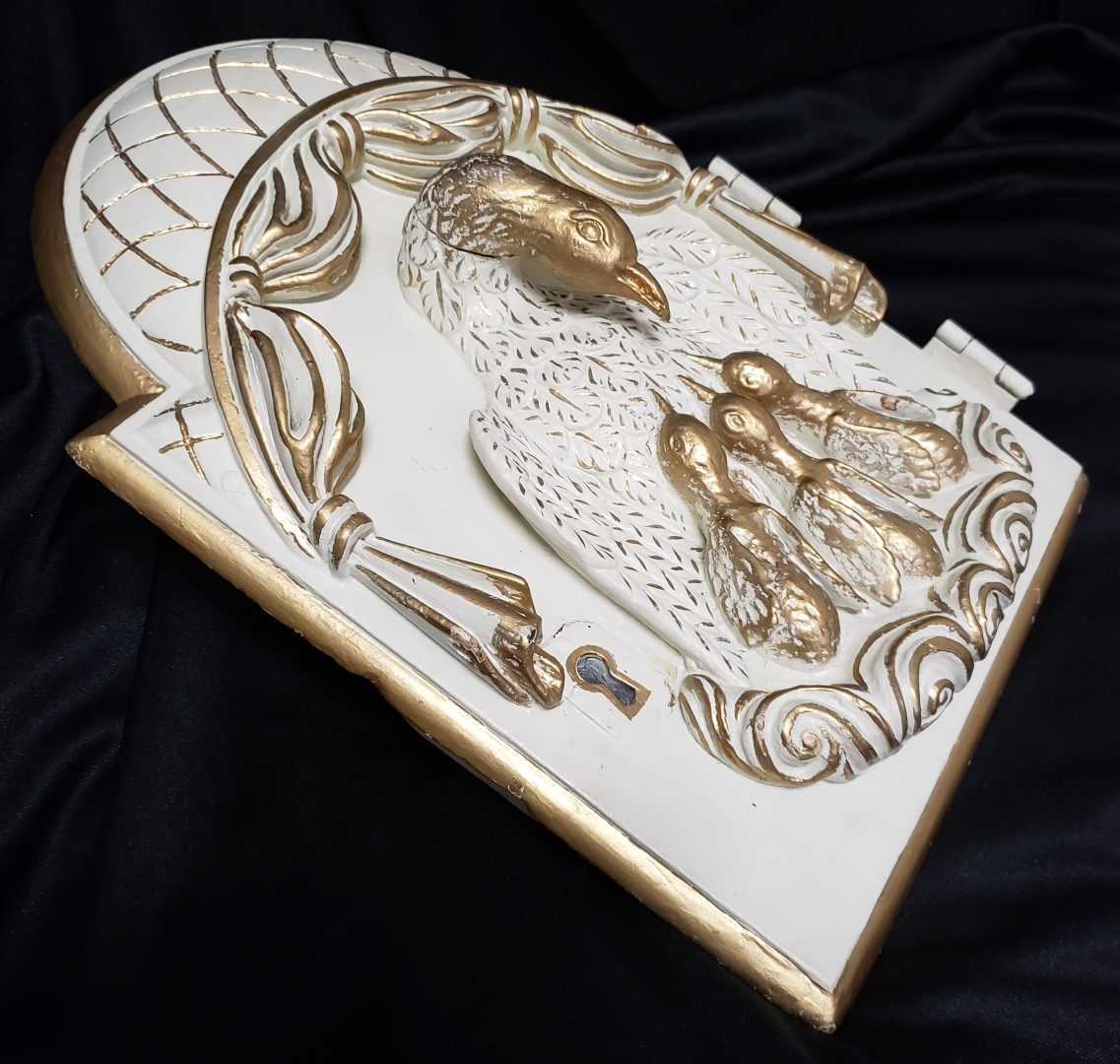This tabernacle door, originally from the Immaculate Conception parish church in Trois-Rivières, is an admirable wooden sculpture painted in creamy white with gold accents and embellished with a pelican watching over its three chicks. For the Christian Church, this bird symbolizes piety, charity, the Eucharist, and the sacrifice of Christ the Saviour.
As far back as medieval times, most works that depict the pelican present it with an eagle’s beak. The nest resembles waves—perhaps a pictorial interpretation of the location of the parish, which is located at the confluence of the Saint-Maurice River and the St. Lawrence River, from which Trois-Rivières takes its name.
In places of worship in the Catholic religion, the tabernacle, placed on top of an altar table, features a door that serves to protect its contents, generally the ciborium containing the consecrated hosts. This door usually locks with a key.
With respect to the artist, François Normand (1779-1854), he had settled with his family in Trois-Rivières since 1811 and opened a workshop there.
Toward the late 1810s and early 1820s, the sculptor, carpenter, joiner, and architect was entrusted with the interior decoration of the church by Reverend Louis-Marie Cadieux, vicar general and priest of the Immaculate Conception of Trois-Rivières parish from 1819 to 1835.
Along with François Lafontaine, also a carpenter and sculptor, François Normand created a large canopy, furnished the entire nave with woodwork, and built two confessionals, the baptistery, balustrades, and three altars, among other achievements. It took him four years to complete this project.
Musée Pierre-Boucher Collection
1977 244 S


